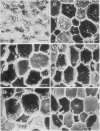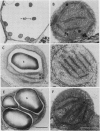Abstract
To determine if starch statoliths do, in fact, act as gravisensors in cereal grass shoots, starch was removed from the starch statoliths by placing 45-day-old intact barley plants (Hordeum vulgare cv `Larker') in the dark at 25°C for 5 days. Evidence from staining with I2-KI, scanning electron microscopy, and transmission electron microscopy indicated that starch grains were no longer present in plastids in the pulvini of plants placed in the dark for 5 days. Furthermore, gravitropic curvature response in these pulvini was reduced to zero, even though pulvini from vertically oriented plants were still capable of elongating in response to applied auxin plus gibberellic acid. However, when 0.1 molar sucrose was fed to the dark pretreated, starch statolith-free pulvini during gravistimulation in the dark, they not only reformed starch grains in the starch-depleted plastids in the pulvini, but they also showed an upward bending response. Starch grain reformation appeared to precede reappearance of the graviresponse in these sucrose-fed pulvini. These results strongly support the view that starch statoliths do indeed serve as the gravisensors in cereal grass shoots.
Full text
PDF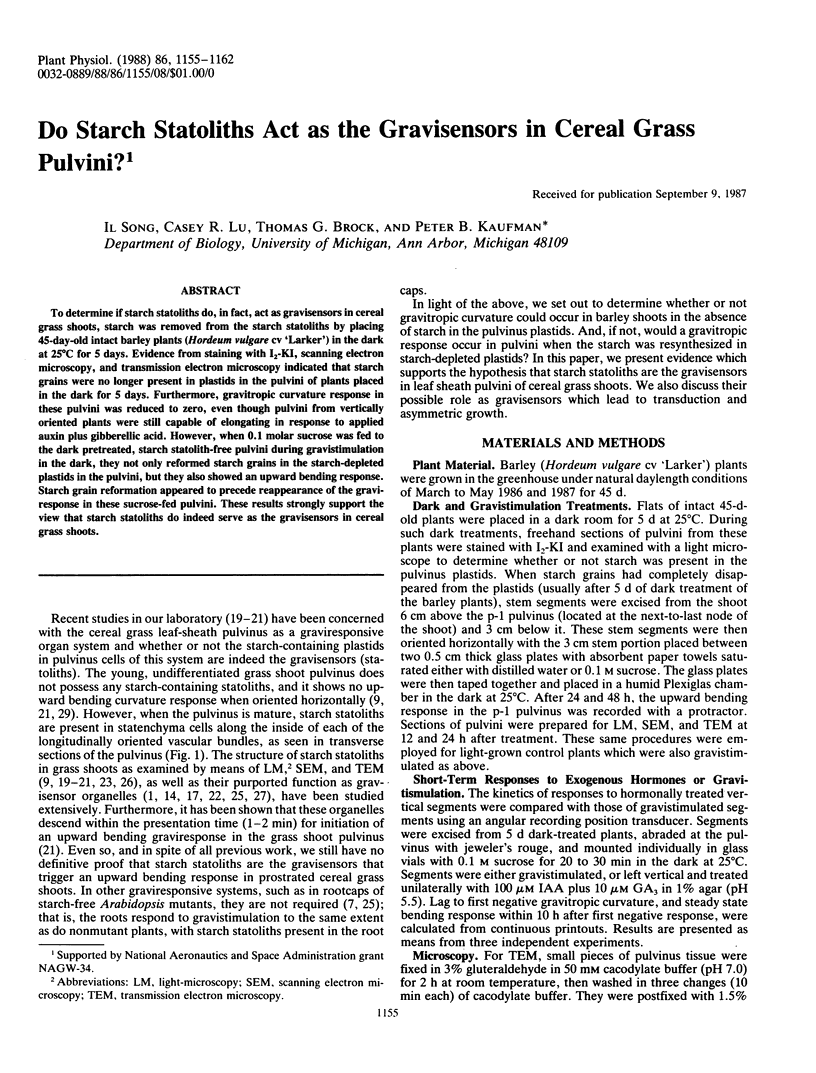
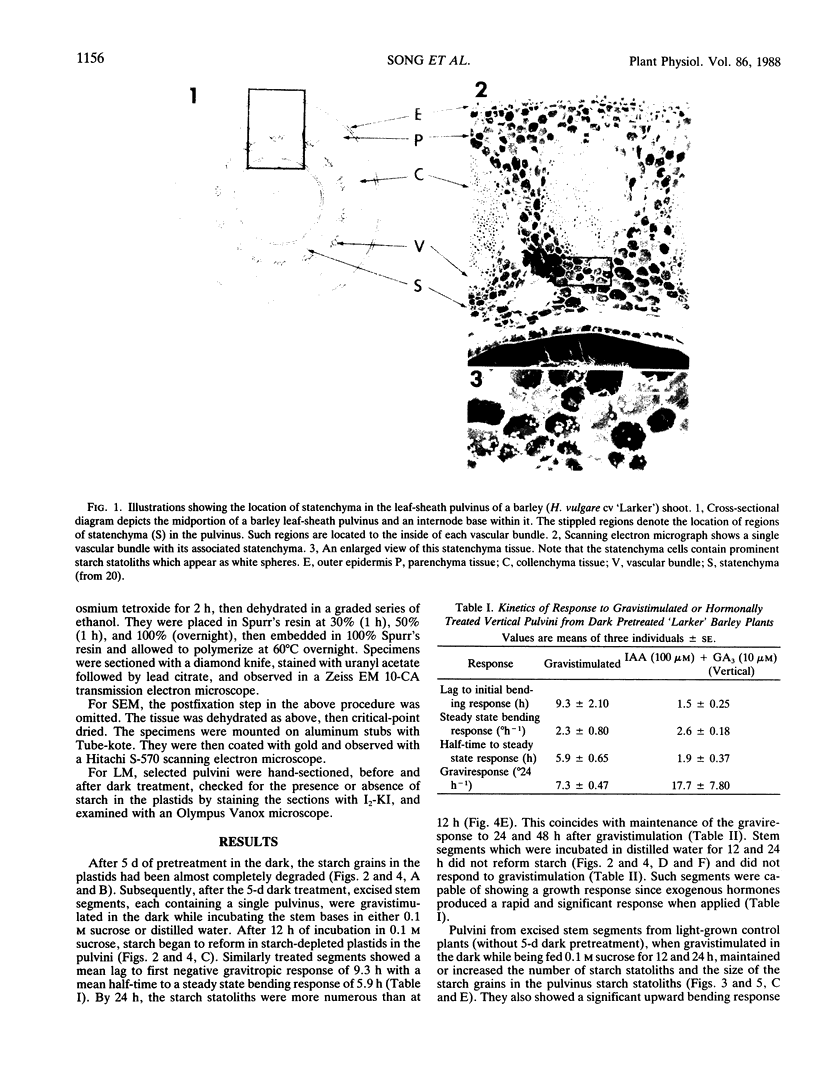



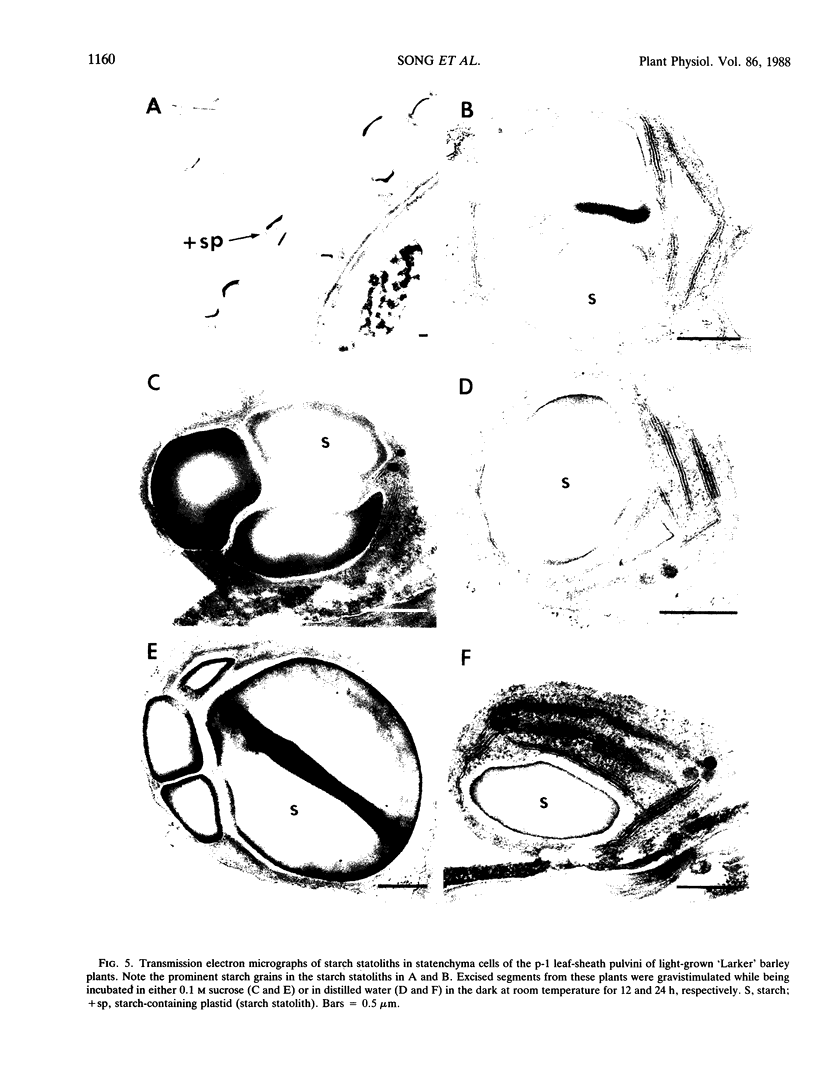
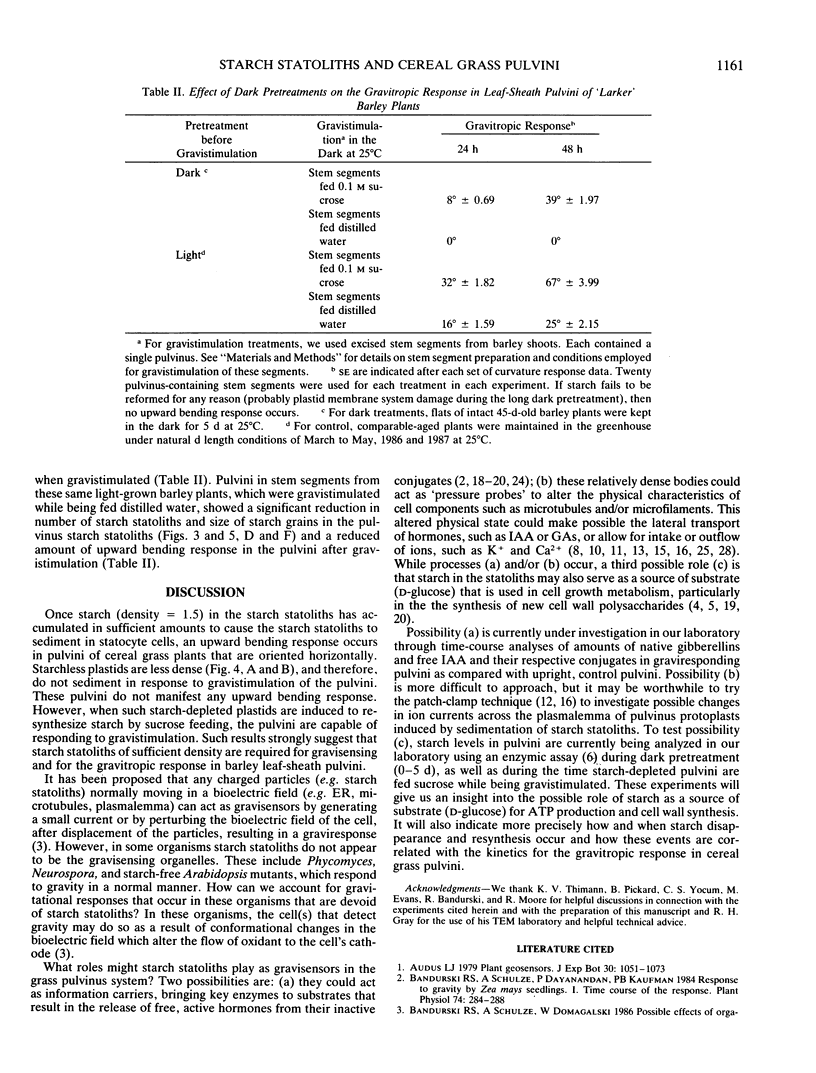
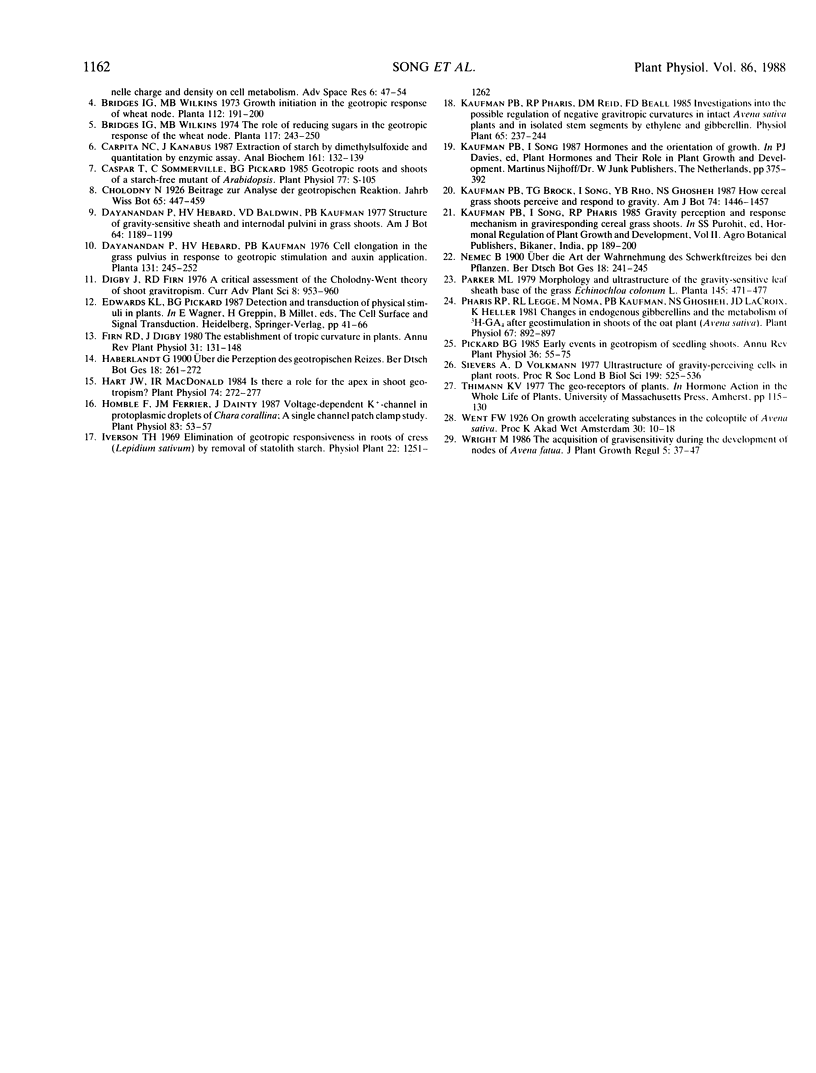
Images in this article
Selected References
These references are in PubMed. This may not be the complete list of references from this article.
- Bandurski R. S., Schulze A., Dayanandan P., Kaufman P. B. Response to gravity by Zea mays seedlings. I. Time course of the response. Plant Physiol. 1984;74:284–288. doi: 10.1104/pp.74.2.284. [DOI] [PMC free article] [PubMed] [Google Scholar]
- Bandurski R. S., Schulze A., Domagalski W. Possible effects of organelle charge and density on cell metabolism. Adv Space Res. 1986;6(12):47–54. doi: 10.1016/0273-1177(86)90065-7. [DOI] [PubMed] [Google Scholar]
- Carpita N. C., Kanabus J. Extraction of starch by dimethyl sulfoxide and quantitation by enzymatic assay. Anal Biochem. 1987 Feb 15;161(1):132–139. doi: 10.1016/0003-2697(87)90662-2. [DOI] [PubMed] [Google Scholar]
- Hart J. W., Macdonald I. R. Is there a role for the apex in shoot geotropism? Plant Physiol. 1984 Feb;74(2):272–277. doi: 10.1104/pp.74.2.272. [DOI] [PMC free article] [PubMed] [Google Scholar]
- Homblé F., Ferrier J. M., Dainty J. Voltage-Dependent K-Channel in Protoplasmic Droplets of Chara corallina: A Single Channel Patch Clamp Study. Plant Physiol. 1987 Jan;83(1):53–57. doi: 10.1104/pp.83.1.53. [DOI] [PMC free article] [PubMed] [Google Scholar]
- Kaufman P. B., Brock T. G., Song I., Rho Y. B., Ghosheh N. S. How cereal grass shoots perceive and respond to gravity. Am J Bot. 1987;74(9):1446–1457. [PubMed] [Google Scholar]
- Kaufman P., Pharis R. P., Reid D. M., Beall F. D. Investigations into the possible regulation of negative gravitropic curvature in intact Avena sativa plants and in isolated stem segments by ethylene and gibberellins. Physiol Plant. 1985;65:237–244. doi: 10.1111/j.1399-3054.1985.tb02389.x. [DOI] [PubMed] [Google Scholar]
- Pharis R. P., Legge R. L., Noma M. Changes in Endogenous Gibberellins and the Metabolism of [H]GA(4) after Geostimulation in Shoots of the Oat Plant (Avena sativa). Plant Physiol. 1981 May;67(5):892–897. doi: 10.1104/pp.67.5.892. [DOI] [PMC free article] [PubMed] [Google Scholar]
- Pickard B. G. Early events in geotropism of seedling shoots. Annu Rev Plant Physiol. 1985;36:55–75. doi: 10.1146/annurev.pp.36.060185.000415. [DOI] [PubMed] [Google Scholar]
- Sievers A., Volkmann D. Ultrastructure of gravity-perceiving cells in plant roots. Proc R Soc Lond B Biol Sci. 1977 Dec 30;199(1137):525–536. doi: 10.1098/rspb.1977.0160. [DOI] [PubMed] [Google Scholar]





